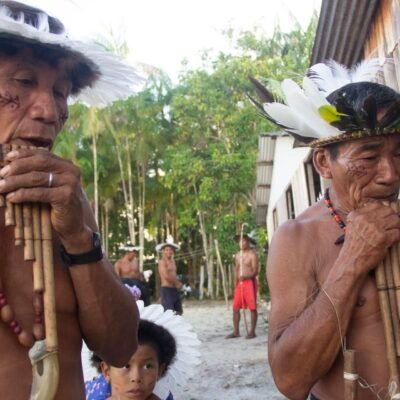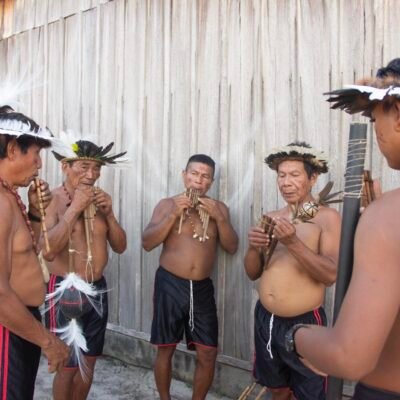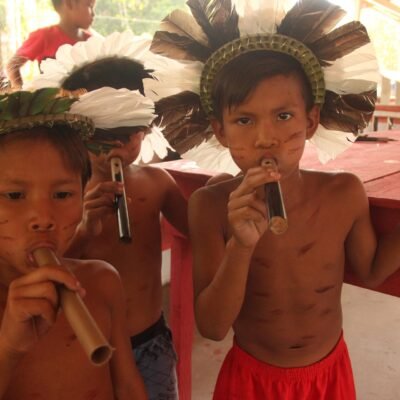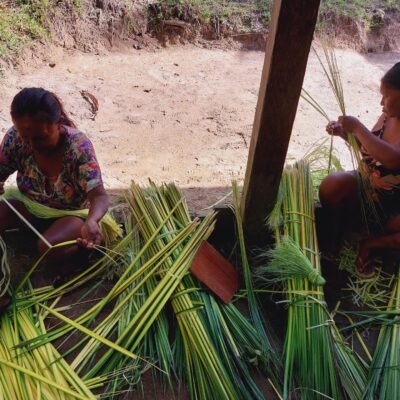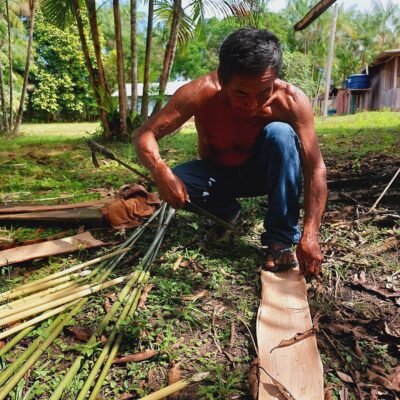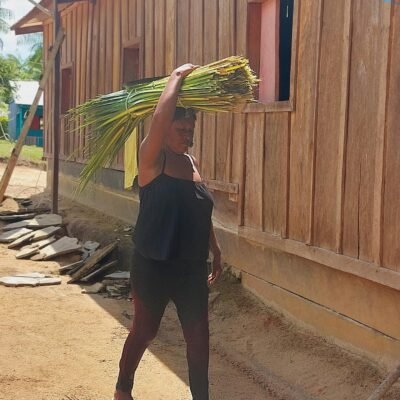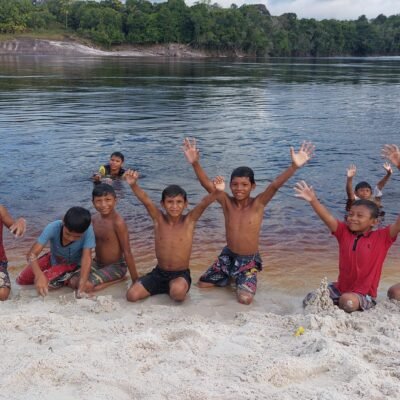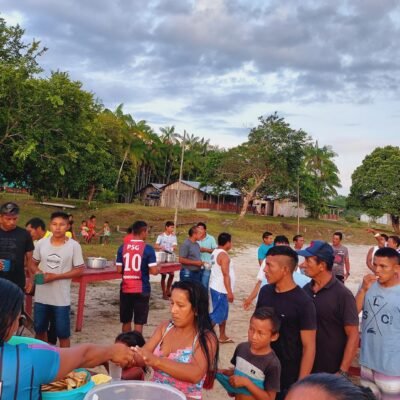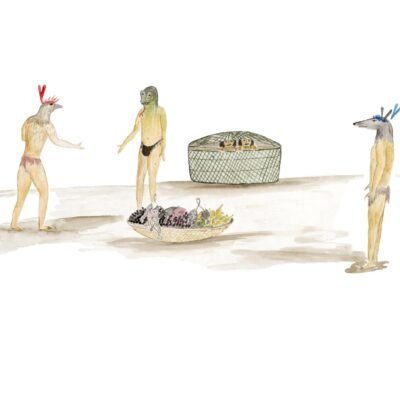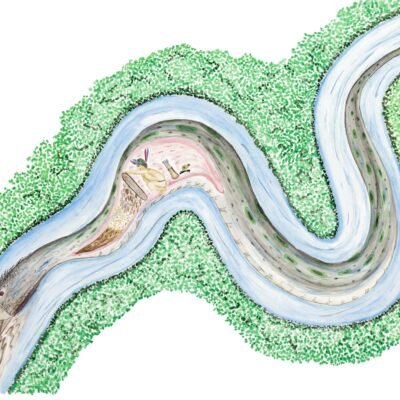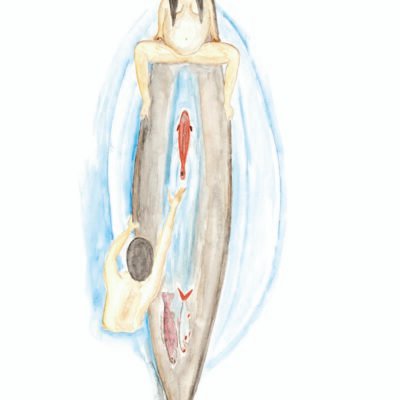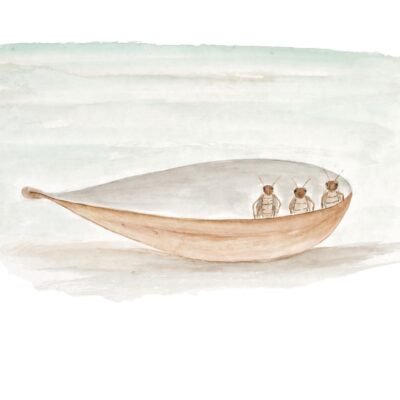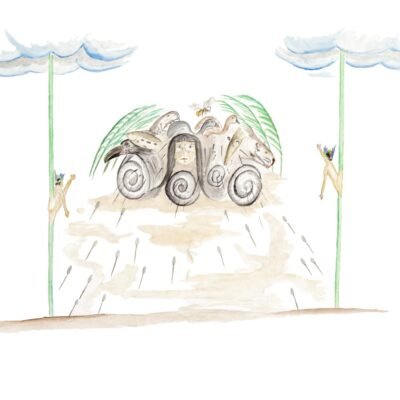
WANHEKE IPANANA WHA WALIMANAI
HOUSE OF KNOWLEDGE OF THE NEW GENERATION
BANIWA LIVING SCHOOL
Territory: Assunção do Rio Içana village - 6,690 hectares
Population benefited: 90 families and approximately 700 people, divided into 7 villages (neighbourhoods), Assunção, Mazzarelo, Sagrado Coração de Jesus, Dom Bosco, Santa Cruz, Carará poço and São Francisco
Ethnicities: Baniwa, Tariano, Kubeo, Werekena, Rupidha, Koripako, Wanano, Tucano and Baré.
Languages spoken: Baniwa and Nheengatu.
Coordinators: Francy Baniwa and Francisco Fontes Baniwa
The Medzeniakonai are inhabitants of the cultural and multilingual system of the Upper Rio Negro, an area of approximately 250,000 km² that covers the north-west of the Amazon basin, in a cross-border region with Venezuela and Colombia. They are one of the 23 indigenous peoples who inhabit the Upper Rio Negro Indigenous Land, a vast territory of around 80,000 km², located in the municipality of São Gabriel da Cachoeira (AM). Together with this group of peoples, they have a deep history dating back at least 3,000 years of unique cultural development. Their more than 90 communities, spread along the Içana and Ayari rivers, tributaries of the Rio Negro that make up the Içana basin, speak Baniwa and Koripako, dialectal variations of a northern Arawak language; Nheengatu, or general language, from the Tupi-Guarani family; Portuguese and Spanish; as well as various languages of other peoples who also inhabit their traditional territory, such as Tukano, Wanano and Kubeo, from the Tukano family. The Içana basin covers around 35,000 square kilometres, of which 27,000 square kilometres are in Brazilian territory.
The determination of the Baniwa and Koripako peoples as ‘Walimanai’ (the humanity that inhabits the present world) or ‘Wakoenai’ (those who speak our language) was made by non-indigenous people. As far as we are concerned, we are the ‘Medzeniakonai’, which means that we are original-speaking peoples. When we refer to the Medzeniakonai, we mean the 19 clans that make up the Baniwa and Koripako-speaking nation: Baniwa - Walipere-dakeenai, Hohodeni, Dzawinai, Kadaopolittana Liedawieni, Kadaopoliro, Kotteeroeni, Adzaneeni, Maoliene, Paraattana, Moliweni, Awadzoronai, Jurupari Tapuya, Mawettana, Tokedakeenai and Hipattana; Koripako - Komadaminanai, Kapittiminanai and Padzowalieni.
According to our millenary culture, we are the inheritance left by Heeko (demiurge) there in the stone-land, the centre of formation and origin of humanity, located in ‘Hiipana’ (eeno hiepolekoa - navel of the world) in Uapuí-Cachoeira, on the Ayari River. This is where humanity emerged, especially the Baniwa people, their clans and their territories.
From our gods we have inherited a vast expanse of land, delimited by a set of markings (petroglyphs) that have defined the territory of each clan of our people since time immemorial. These historical and ancestral demarcations are what allow for control, governance and environmental management in our territory.
Our original form of social organisation dates back to the creation of the world and of humanity, in other words, it was in Uapui-Cachoeira that we began our form of self-government. We are part of the ethnic socio-diversity and cultural plurality of the Rio Negro. We are the basis of the existence of harmonious coexistence, of living well and living well in this land.
Our way of life has always been ‘interculturality’, acquired through coexistence between the Baniwa and Koripako peoples and other ethnic groups that have historically inhabited the upper Rio Negro region. This is why it is so important and fundamental for strengthening our experience, our rights, our culture, our plans for the future, governance and territorial and environmental management of the Indigenous Lands, which are unavailable, imprescriptible and inalienable assets of the Union, destined for the enjoyment of the indigenous peoples.
The BANIWA LIVING SCHOOL is a great achievement for the Baniwa people, who live in the north-west of the Amazon, in the Alto Rio Negro Indigenous Territory, in the municipality of São Gabriel da Cachoeira-AM. This territory is home to 23 peoples of different languages, cultures and religions. It is the most indigenous territory in Brazil.
The BANIWA LIVING SCHOOL was born out of six years' work researching and writing the book Umbigo do Mundo [Navel of the World] (Dantes Editora, 2023), by FRANCY BANIWA in dialogue with her father, FRANCISCO LUIZ FONTES BANIWA (MATSAAPE), the narrator of traditional oral stories, and her brother FRANK FONTES BANIWA (HIPATTAIRI), the author of 74 watercolours. The BANIWA LIVING SCHOOL was thus born through the narratives that are our guide to living well.
‘This is the place where I was born and grew up. It's where my aunts, grandparents, cousins, friends and childhood friends are. This is the basis of everything, the basis of teaching, what made me who I am today. The community had no trouble understanding what a Living School is when I presented the project. Because we are already a Living School. A Living School happens when you wake up at four in the morning to take a shower and also when you go to bed at six in the evening after a long day's work in the fields. Everything we are and everything we do in the community within our homes is a living school. All the basketry, the art of cutting straw, fishing, cleaning fish, looking after the farm, all of it. My father is a living school. My uncles and teachers are living schools. All the fields are living schools. So is our community and all the residents here. Through the braids, the songs, the fermented drink shared on caribé mornings, which is a daily sharing, with the laughter of the women talking, playing together with the children and the youth.’
Francy Baniwa
MONTHLY SUPPORT:
The monthly amount is used to pay our experts, who work to train our young people and people from the community. They are our indigenous doctors who are the master tutors at the Living School.
Women artisans and farmers: Natália Martins (Werekena), Virginia Olímpio (Baniwa), Isabel Castro (Baniwa), Bibiana Fontes (Baniwa) and Maria Bidoca (Koripako). Wise men, artisans and experts: Francisco Fontes (Baniwa), Francisco D'Ávila (Baniwa), Hermes Plácido (Baniwa), Jorgue Idalino (Baniwa), Frank Fontes (Baniwa), Leonor Fontes (Baniwa), Gleibson Fontes (Baniwa), Estevão Fontes (Baniwa).
NEXT STEPS:
- Research into the Baniwa indigenous calendar, mapping the territory;
- Holding workshops to study our territory, drawing workshops,
and cartography workshops;
- Research into soil types, collecting data on birds, fish, animals and plants with a view to producing books about our own home;
- Creating gardens for the Living School to strengthen food sovereignty and our well-being;
- Teaching young people about the importance of this ancestral knowledge.

COORDINATORS
Francisco Luiz Fontes Baniwa is a Baniwa of the Waliperedakeenai clan, from the community of Ucuqui Cachoeira, located on the Uaraná river, a tributary of the Ayari river, part of the Içana river basin. He is a maadzero - which means ‘wise’ to the Baniwa people. He is a master of dances, songs, musical instruments, a storyteller, a healer and a craftsman - all of which he learnt from his father, uncles and grandfathers from the Waliperedakeenai and Hohoodeni clans. Polyglot and narrator of the book Umbigo do Mundo [Navel of the World]. He was born speaking Baniwa and Koripako, started learning Nheengatu with his father and understands Kubeo because of his maternal grandmother. As well as knowing Portuguese and Spanish, he also learnt to speak Wanano on his travels and became fluent in Nheengatu when he settled and married in Asunción in his youth.
Francineia Bitencourt Fontes (Francy Baniwa) is an indigenous woman, anthropologist, photographer and researcher of the Baniwa people, of the Waliperedakeenai clan, born in the community of Assunção, on the Lower Içana River, in the Alto Rio Negro Indigenous Land, municipality of São Gabriel da Cachoeira - AM. She has been involved in the indigenous organisations and movement of the Rio Negro for a decade, working and researching in the areas of indigenous ethnology, gender, indigenous organisations, traditional knowledge, memory, narrative, photography and audiovisuals. She has a degree in Sociology (2016) from the Federal University of Amazonas (Ufam). She has a master's degree (2019) and is a PhD candidate in Social Anthropology at the National Museum of the Federal University of Rio de Janeiro (PPGAS-MN/UFRJ). She is the director of the 2020 documentary Kupixá asui peé itá - A roça e seus caminhos [The farmland and its paths]. She is currently coordinating the pioneering ecological project for the production of Amaronai Itá - Kunhaitá Kitiwara cloth sanitary pads, funded by the Rio Negro Indigenous Fund (FIRN/FOIRN), for the empowerment and menstrual dignity of women from the alto-rio-negrino indigenous territory. She is the author of the book Umbigo do Mundo [Navel of the World], written from the stories of her father, Francisco Fontes Baniwa, and illustrated by her brother, Frank Fontes Baniwa - published by Dantes Editora in 2023.



